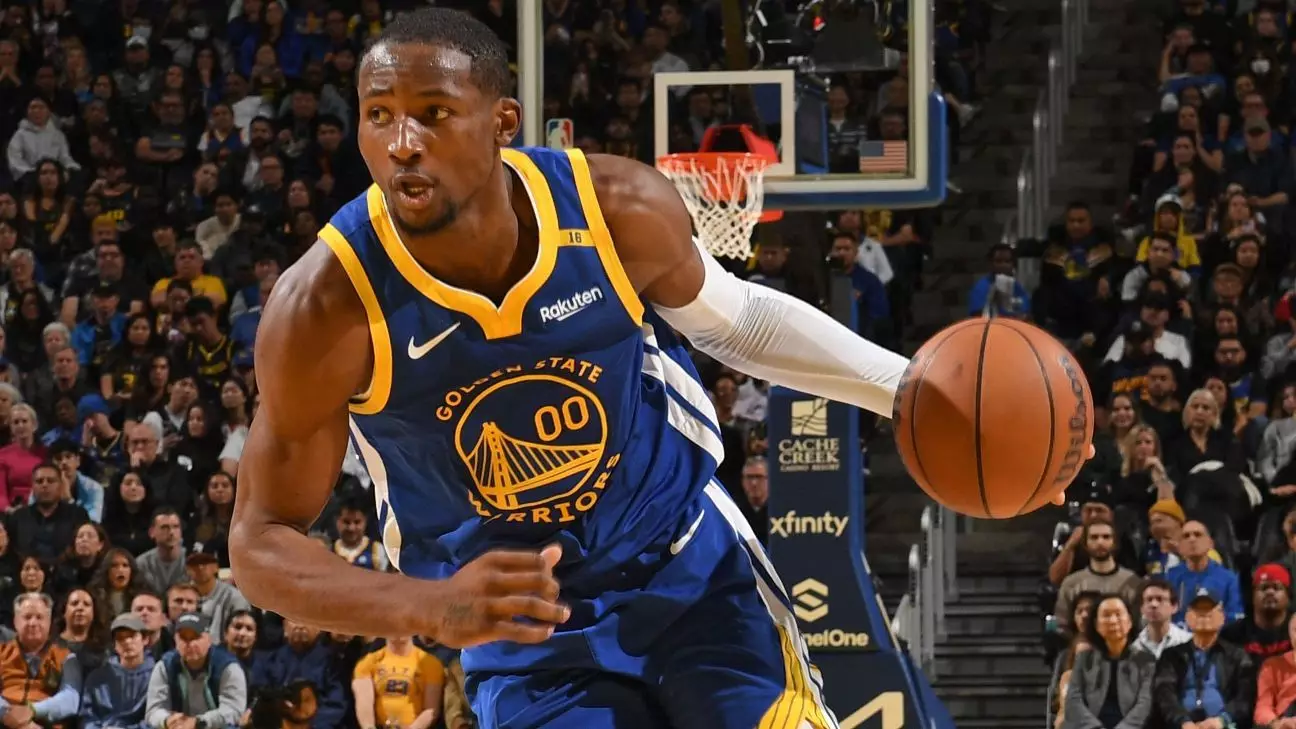In the fiercely competitive environment of the NBA, emerging stars often find themselves at a crossroads—torn between loyalty, opportunity, and personal ambition. Jonathan Kuminga’s current contract negotiations epitomize this internal struggle. Far from succumbing to the pressure to sign the initial lucrative offer from the Golden State Warriors, Kuminga’s refusal to settle signals a broader narrative: young talent demanding more than just a paycheck, seeking clarity in their roles, and aspiring to carve a distinct identity in the league.
Kuminga’s stance reveals a pivotal truth about modern NBA players: they are no longer passive recipients of contractual terms. Instead, they actively shape their careers, weighing immediate financial gains against long-term stability, autonomy, and influence. Kuminga’s disinterest in the Warriors’ current proposal underscores his desire for a more substantial, guaranteed starting role—an indicator that he views his development and visibility as integral to his future success. This stance challenges teams to rethink talent development strategies, emphasizing personalized growth and meaningful roles over traditional franchise loyalty.
Furthermore, Kuminga’s approach speaks to a broader generational shift where the younger players prioritize agency. The NBA, long known for its franchise-centric model, now faces a new era where players like Kuminga are emboldened to seek environments that align with their visions of self-actualization. This highlights an evolving power dynamic: athletes are increasingly aware of their value beyond just playing on the court; they seek environments that foster both professional and personal growth, an evolution that could redefine team-building philosophies for years to come.
Strategic Standoff: Negotiations as a Reflection of Broader League Trends
The protracted delay in Kuminga’s contract talks with the Warriors is emblematic of a wider phenomenon impacting the league’s offseason market: the scarcity of cap space and a cautious appetite for risky investments. Restricted free agents (RFAs), once seen as valuable assets to teams looking for affordable yet promising talent, now find themselves in a limbo, as cautious management and financial constraints suppress market activity.
Golden State’s stance, holding steadfast to their valuation of Kuminga and demanding a first-round pick in any sign-and-trade scenario, reflects their strategic mindset—protecting their cap sheet while asserting leverage in negotiations. This approach also underscores a broader league trend: teams are hesitant to commit large sums or assets for players whose immediate impact and long-term promise are still under evaluation. Such cautiousness, driven by economic realities and a desire to avoid bad salary commitments, leaves RFAs like Kuminga in limbo, stalling potential roster improvements and reshaping the offseason landscape.
This climate influences not just contracts but also strategic planning across franchises. Teams are wary of overextending and prefer to secure young talent on cost-controlled deals, especially in an era where free-agent markets are sluggish. Kuminga’s case exemplifies this cautious environment, where neither side is willing to make the first move, resulting in a standstill that reflects league-wide hesitancy.
Your Future, Your Terms: Kuminga’s Path to Control and Growth
What makes Kuminga’s situation particularly compelling is his pursuit of control over his career trajectory amidst external uncertainties. Accepting the Warriors’ qualifying offer—a one-year, $7.9 million deal—would provide him with a platform of maximum control, including the freedom to explore opportunities on his own terms next summer. This pathway signifies a tactical decision: sacrificing immediate financial gain for future leverage and autonomy.
Kuminga’s desire to secure a more prominent, consistent role signifies an underlying belief in his own potential. He demonstrated flashes of brilliance during the playoffs and is eager for a chance to be a primary contributor, not a supplemental piece. His frustration with being perceived as a secondary option—evident from his playoff performances—can be interpreted as a quest for validation and growth, an essential step in his evolution from a promising prospect to a franchise cornerstone.
This mindset is a testament to an emerging philosophical paradigm among young athletes: the emphasis on personal development, meaningful roles, and control over one’s destiny. Kuminga’s willingness to forgo immediate riches in favor of long-term agency could inspire other players to adopt similar strategies, thereby reshaping negotiations and team dynamics across the league.
Team Strategy and the Future Roadmap for Golden State
The Warriors’ cautious stance in handling Kuminga’s contract situation demonstrates both prudence and strategic foresight. With significant roster construction projects underway—like acquiring veteran sharpshooters and backcourt depth—maintaining financial flexibility becomes paramount. Their focus on veteran talent such as Al Horford and potential bench options like De’Anthony Melton and Seth Curry reveals a calculated effort to optimize the roster around core stars.
Yet, behind this rational planning lies a recognition of the importance of Kuminga’s potential. The Warriors see him as an integral part of their future, especially given the team’s resilience and championship pedigree. This dependence underscores the importance of resolving the Kuminga situation swiftly, not just to finalize roster construction but to send a message about the team’s long-term vision.
Furthermore, the prolonged negotiations serve as a reminder of the league’s evolving power dynamics. When a franchise reportedly refuses to move forward with other personnel decisions until a critical contract issue is resolved, it illustrates how deeply intertwined individual player fates have become with team strategies. For Golden State, securing Kuminga’s commitment isn’t just about money; it’s about stability, continuity, and signaling confidence in their young star amid a turbulent market.
—
This analysis underscores a broader insight: Kuminga’s current negotiations are more than contractual disagreements—they are emblematic of a new era in professional basketball where player agency, financial prudence, and strategic foresight collide. His pursuit of a meaningful role and control over his career isn’t just about personal ambition; it could very well influence the future norms of the league, prompting teams and players alike to rethink what success really means on and off the court.

